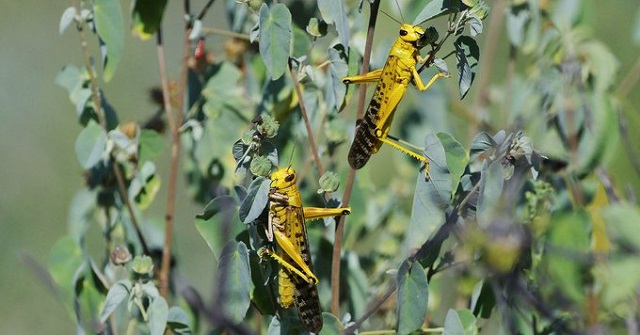
Kampala, Uganda | THE INDEPENDENT | Efforts to contain the invasion of desert locusts are on going across the East African region despite limits on the flow of personnel and equipment stemming from the global COVID-19 pandemic.
The Food and Agriculture Organization-FAO says that the infestation of locusts regarded as the world’s most destructive migratory pest remains alarming particularly in Ethiopia, Kenya and Somalia where it poses an unprecedented threat to food security and livelihoods for millions.
However, the agency fears that widespread rainfall that started in March is expected to generate a dramatic increase in locust numbers in the coming months with new swarms due to move from Kenya into South Sudan and Uganda. Estimates show that locust numbers could grow another 20 times during the upcoming rainy season unless control activities are stepped up.
Agriculture Minister Vincent Ssempijja confirmed in an earlier briefing that Uganda had been invaded by a second wave of desert locusts which entered the country through Amudat district on Friday, April 3, 2020 and further spread inland into Kumi, Katakwi, Otuke and Agago districts by Monday. He, however says that the Ugandan government had fast-tracked the procurement of appropriate chemicals for spraying the locusts.
In Kenya, FAO project officer Ambrose Ngetich fears that if the farmers are not able to grow their crops early enough there will be a challenge in terms of availability of food in the future. He However adds that COVID-19 restrictions have complicated the work of locust control teams.
He says that FAO is already working with governments, farmers and agricultural producers to overcome hurdles brought about by restrictions imposed by countries to contain the coronavirus outbreak and ensure that there is no slowdown in fighting the locust infestation.
George Dodds, one of the affected farmers on the Kenyan side of the border says that unfortunately, the world forgot about the dangers that the locusts present to the region as soon as the COVID -19 pandemic hit the continent.
But FAO’s Resilience Team Leader for East Africa Cyril Ferrand says that the response has so far been great because all the affected countries working with FAO consider fighting desert locusts a national priority.
“While lockdowns becoming the reality, people engaged in the fight against the locust upsurge are still allowed to conduct surveillance and air and ground control operations,” he said.
So far, more than 240,000 hectares across 10 countries have been treated with chemical pesticides or biopesticides and 750 people have been trained to carry out ground locust control operations. But COVID-19 is having an impact on the supply of pesticides as well as motorized sprayers due to delays in pesticide deliveries due to a significant reduction in global air freight operations.
FAO is encouraging all countries to use a rugged handheld device – called eLocust3 – that can record and transmit real-time data via satellite to national locust centres and the Desert Locust Information Service at FAO headquarters.
In the six countries hardest-hit – Ethiopia, Kenya, Somalia, South Sudan, Uganda and Tanzania – around 20 million people already experience food insecurity.
******
URN
 The Independent Uganda: You get the Truth we Pay the Price
The Independent Uganda: You get the Truth we Pay the Price


